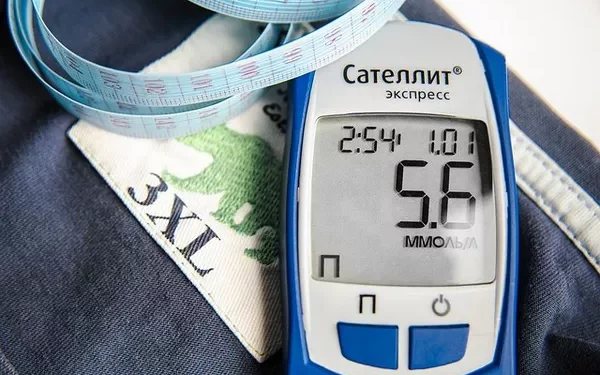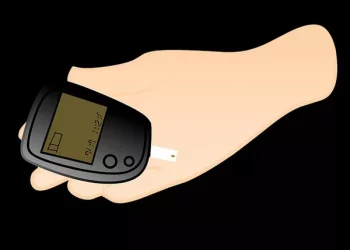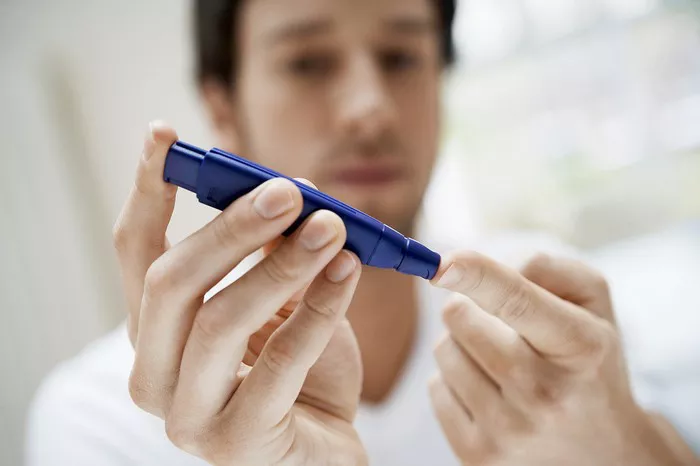Monitoring blood glucose levels is an essential part of managing diabetes. Traditionally, people with diabetes have relied on fingerstick blood glucose meters, which involve pricking a fingertip to obtain a small blood sample for analysis. However, advancements in technology have led to the development of continuous glucose monitoring (CGM) systems, which offer a more convenient and less invasive way to track glucose levels throughout the day. Among the newer innovations in glucose monitoring is the arm glucose monitor, a device that uses sensors placed on the upper arm to continuously monitor blood glucose levels without the need for fingerstick tests.
This article will provide a comprehensive explanation of how arm glucose monitors work, the technology behind them, their benefits, limitations, and how they compare to other glucose monitoring methods. We will also discuss the potential implications for patients with diabetes, focusing on how these devices can improve disease management and quality of life.
Understanding Blood Glucose Monitoring and Its Importance
For individuals with diabetes, maintaining a stable blood glucose level is crucial for overall health and preventing long-term complications such as heart disease, kidney damage, nerve damage, and vision problems. Glucose monitoring allows patients and healthcare providers to assess how well a person’s blood sugar is being managed and make necessary adjustments to their diet, medication, or lifestyle.
In traditional blood glucose monitoring, patients use a glucose meter that requires a blood sample. The sample is usually obtained by pricking the fingertip, and the meter provides a blood glucose reading within seconds. This method, while effective, can be uncomfortable and may not provide the real-time, continuous data that many people need to effectively manage their condition.
Continuous glucose monitoring (CGM) systems have emerged as an alternative, offering more comprehensive insights into glucose fluctuations throughout the day. Arm glucose monitors are a particular type of CGM that simplifies monitoring by using a sensor placed on the skin, typically on the upper arm.
What Is an Arm Glucose Monitor?
An arm glucose monitor is a type of continuous glucose monitoring (CGM) device that uses a sensor placed on the skin of the upper arm to measure glucose levels in the interstitial fluid (the fluid between the cells). Unlike traditional meters that require a blood sample, these devices measure glucose levels continuously throughout the day, offering real-time data to the user.
Typically, arm glucose monitors consist of two main components:
A sensor: The sensor is a small, disposable device that is attached to the skin using an adhesive patch. The sensor is usually inserted just under the skin using a small needle, where it remains for a period of time, often a week or more. The sensor detects glucose levels in the interstitial fluid and sends data to a receiver or smartphone app.
A transmitter: The transmitter is a small device that connects to the sensor and wirelessly transmits the data to a receiver or smartphone app. This allows users to monitor their glucose levels continuously and make adjustments to their diet or medication as needed.
Some arm glucose monitors also come with a dedicated display device, while others use a smartphone or smartwatch to display the glucose readings.
How Does an Arm Glucose Monitor Work?
Arm glucose monitors operate on the principle of measuring glucose levels in the interstitial fluid, a substance that surrounds the cells in the body. While interstitial fluid does not have the same glucose concentration as blood, it can still provide a good approximation of the glucose levels in the bloodstream.
1. Sensor Insertion and Placement
The first step in using an arm glucose monitor is inserting the sensor. The sensor typically uses a small, thin filament that is inserted just beneath the skin. This insertion is performed using an automatic inserter, which helps minimize discomfort. Once the sensor is in place, the adhesive patch ensures it remains securely attached to the skin.
The sensor contains an enzyme that reacts with glucose. The enzyme, typically glucose oxidase, helps convert glucose in the interstitial fluid into an electrical signal. This signal is then sent to the transmitter.
2. Measuring Glucose in Interstitial Fluid
The sensor works by detecting glucose molecules in the interstitial fluid. When glucose enters the sensor, the enzyme reacts with it and produces hydrogen peroxide as a byproduct. This chemical reaction produces a small electrical current that is directly proportional to the glucose concentration in the interstitial fluid. The sensor is designed to be highly sensitive to glucose, ensuring accurate readings.
The readings obtained from the interstitial fluid are not identical to blood glucose levels, but they are closely correlated. Because glucose in the interstitial fluid lags behind changes in blood glucose (a phenomenon known as “lag time”), the data may not always reflect real-time fluctuations in blood sugar. However, this lag is typically minimal, and modern arm glucose monitors are designed to account for this delay to provide accurate, timely readings.
3. Transmitting Data
Once the sensor detects the glucose levels in the interstitial fluid, it sends the data wirelessly to a transmitter. The transmitter then transmits the data to a display device, which could be a dedicated receiver, a smartphone, or a smartwatch, depending on the model.
The data is typically displayed in real-time, providing users with a continuous view of their glucose levels. Many devices also allow users to set up alerts or notifications to warn them when their blood glucose levels are too high or too low, helping them take immediate action if needed.
4. Data Interpretation and Analysis
The continuous data provided by an arm glucose monitor is invaluable for patients with diabetes. It enables them to observe glucose trends throughout the day, such as after meals, during exercise, or before bedtime. By analyzing this data, users can gain a deeper understanding of how their body responds to various foods, activities, and medications.
Some arm glucose monitors are paired with smartphone apps that provide additional features, such as data analysis, trend graphs, and recommendations. This can help users make informed decisions about their diet, exercise, and insulin usage.
Benefits of Arm Glucose Monitors
1. Continuous Monitoring
The primary benefit of arm glucose monitors is the ability to continuously track blood glucose levels. This eliminates the need for multiple fingerstick tests each day, which can be inconvenient and painful. By offering real-time data, patients can make more informed decisions about their health.
2. Improved Diabetes Management
Continuous monitoring allows for more precise adjustments to insulin therapy, meal planning, and exercise routines. With the ability to see glucose fluctuations in real-time, patients can respond to trends and prevent dangerous highs or lows before they occur.
3. Convenience and Comfort
Unlike traditional glucose meters that require a fingerstick, arm glucose monitors offer a more comfortable and less invasive way to monitor blood glucose levels. The sensor is worn on the arm, and users typically only need to change it once a week or as directed by their healthcare provider.
4. Personalized Insights
Many modern arm glucose monitors are paired with smartphone apps that provide detailed reports on glucose trends. This enables users to track their progress over time, set goals, and receive personalized feedback. Over time, this can help improve overall glucose control and reduce the risk of complications associated with diabetes.
5. Alerts and Notifications
One of the key advantages of arm glucose monitors is their ability to alert users when their blood glucose levels are outside the desired range. Whether glucose is too high or too low, users can receive notifications in real-time, helping them take prompt action, such as administering insulin or consuming carbohydrates.
Limitations of Arm Glucose Monitors
1. Lag Time in Readings
As mentioned earlier, one limitation of arm glucose monitors is the lag time between glucose changes in the blood and those in the interstitial fluid. This delay, although minimal, can sometimes cause discrepancies between the monitor’s readings and actual blood glucose levels, particularly during rapid changes.
2. Accuracy Concerns
While arm glucose monitors are generally accurate, they are not perfect. The accuracy of the sensor can be affected by factors such as hydration levels, skin temperature, and sensor placement. It’s important to periodically calibrate the device (depending on the model) and cross-check the readings with a traditional blood glucose meter for the most accurate results.
3. Sensor Replacement
Arm glucose monitor sensors typically need to be replaced every 7-14 days, depending on the brand and model. This adds to the cost of using the device over time. Additionally, some users may experience skin irritation from the adhesive or discomfort from the sensor insertion.
4. Cost
Continuous glucose monitors, including arm glucose monitors, can be expensive. While some insurance plans cover the cost, others may not. For many patients, the cost of the device, sensors, and accessories can be a barrier to widespread use.
Conclusion
Arm glucose monitors represent a significant advancement in diabetes management. By providing continuous, real-time monitoring of glucose levels, they help patients manage their diabetes more effectively, reduce the need for fingerstick tests, and offer valuable insights into glucose trends throughout the day. While they come with some limitations, such as sensor replacement and lag time in readings, the benefits far outweigh the drawbacks for many individuals living with diabetes.
For those with diabetes, adopting a continuous glucose monitor, such as an arm glucose monitor, can improve glucose control, enhance quality of life, and reduce the risk of long-term complications. With continued advancements in technology, these devices will likely become even more accurate, convenient, and accessible, further empowering patients to take control of their health and well-being. As with any medical device, it’s important to consult with a healthcare provider to determine whether an arm glucose monitor is the right option for managing your diabetes.
Related topics:
How to Use a Blood Sugar Test Machine
























